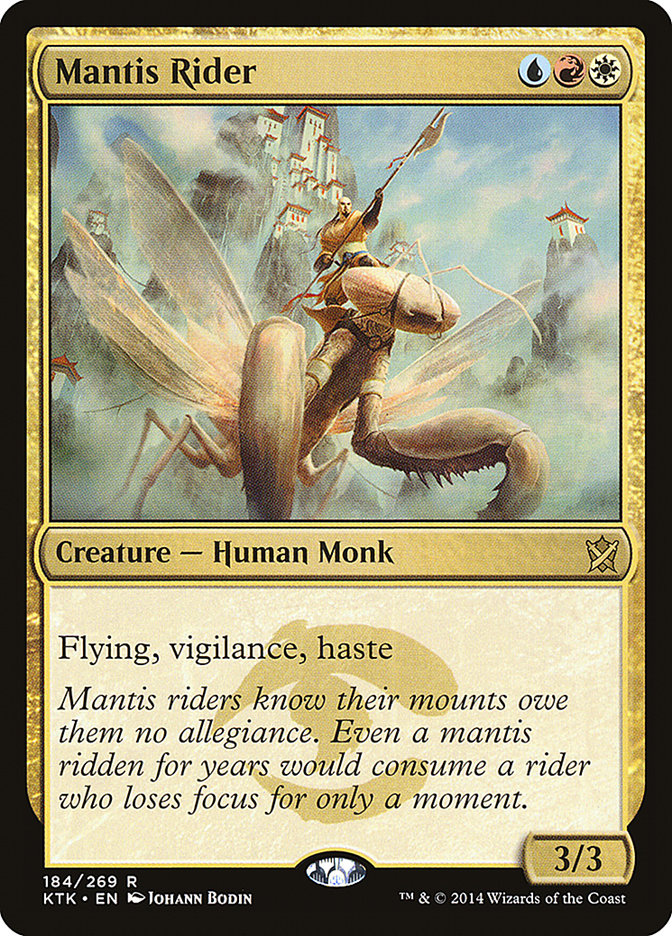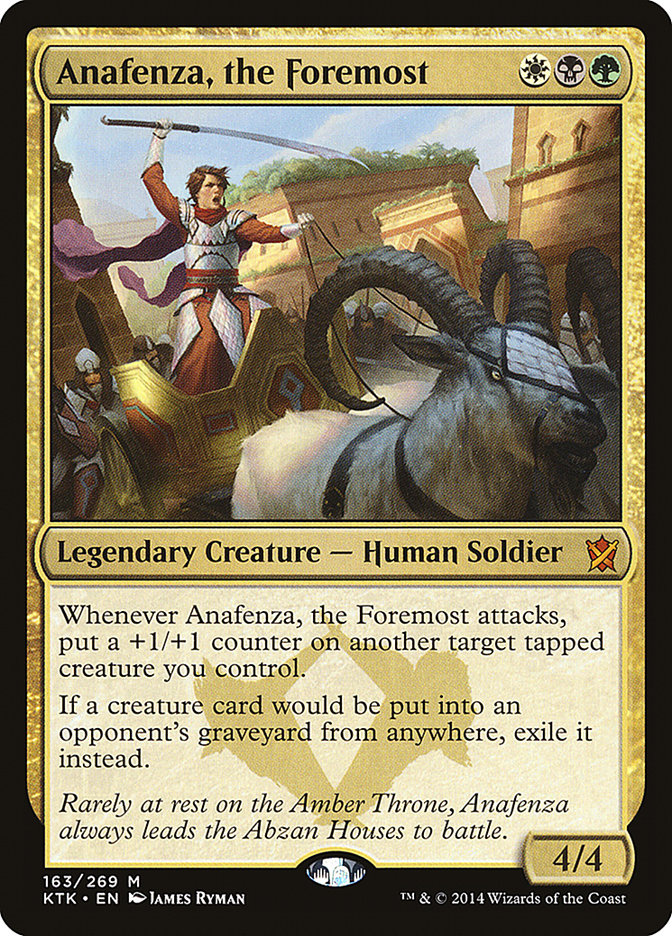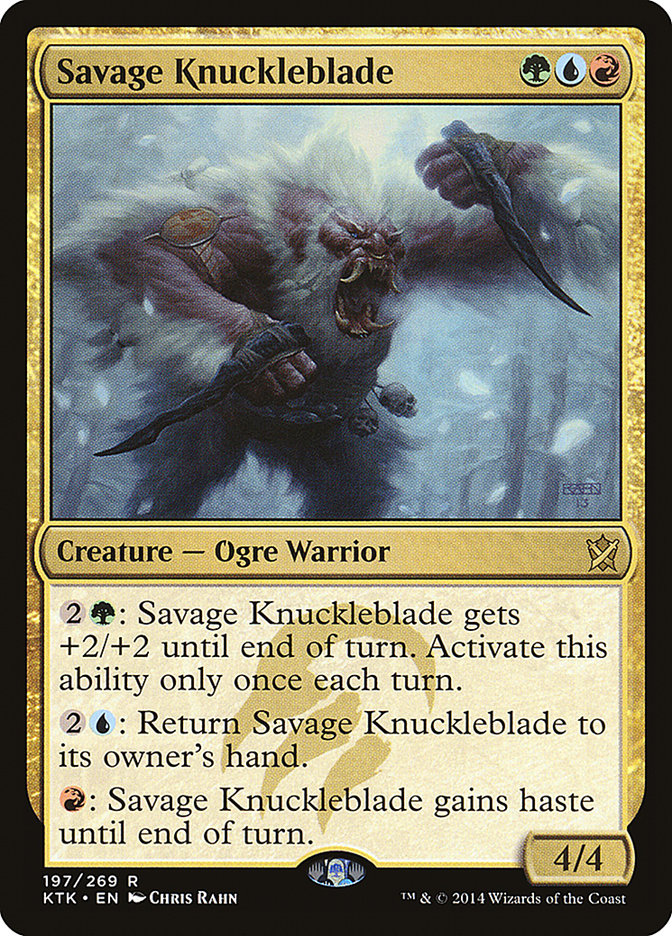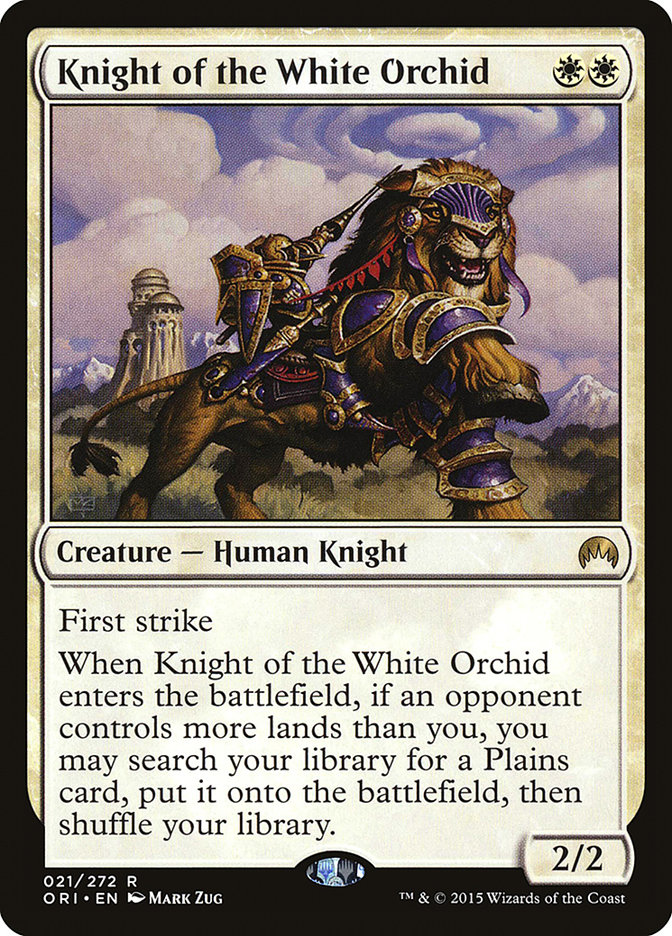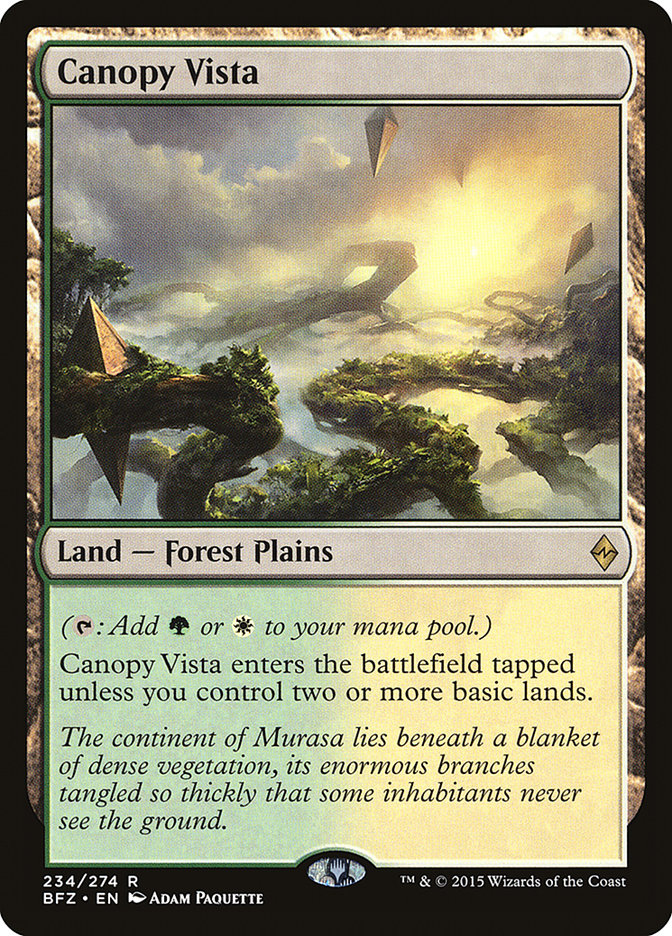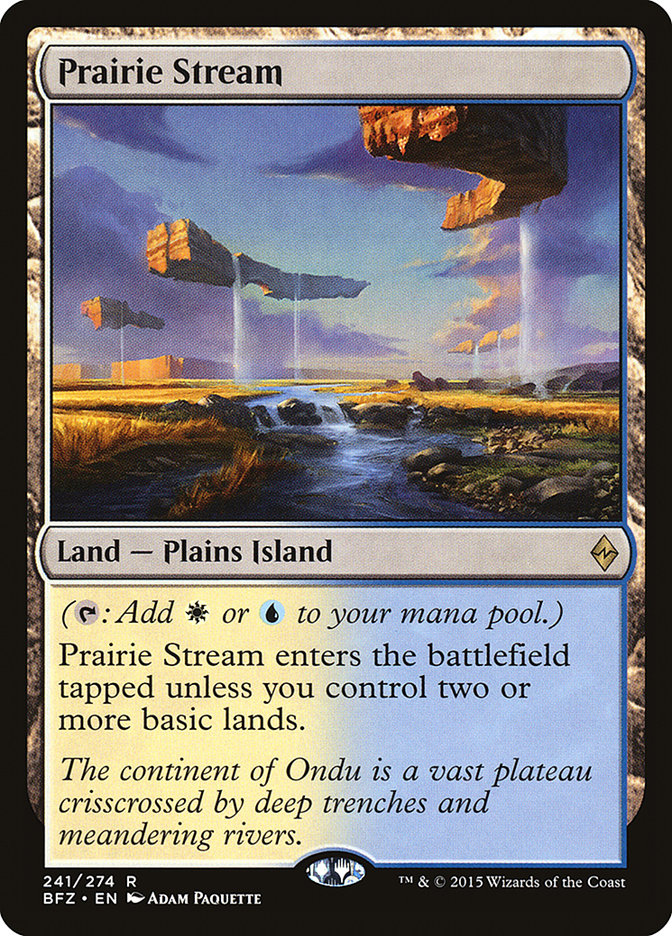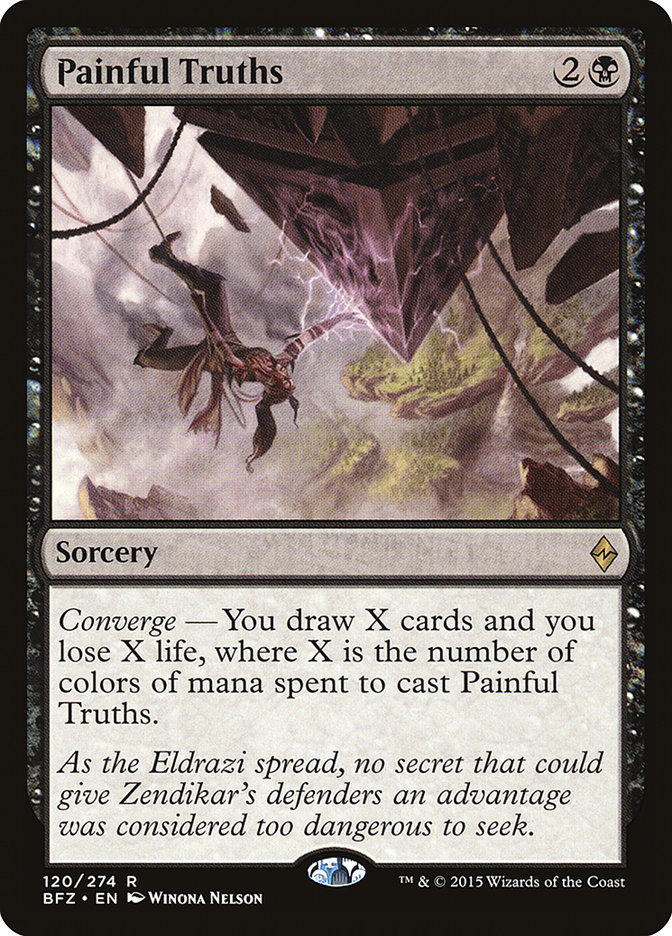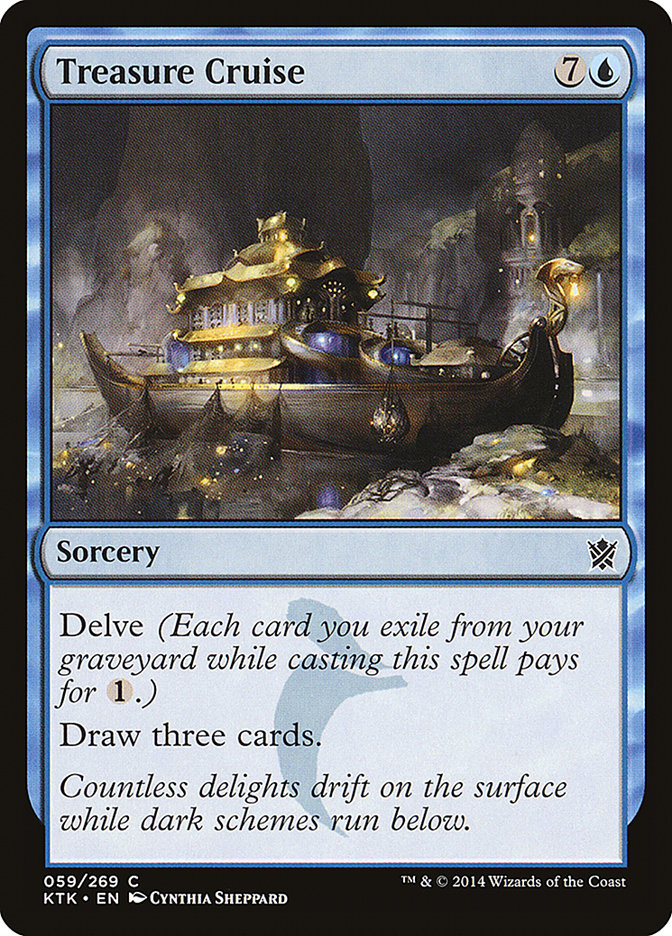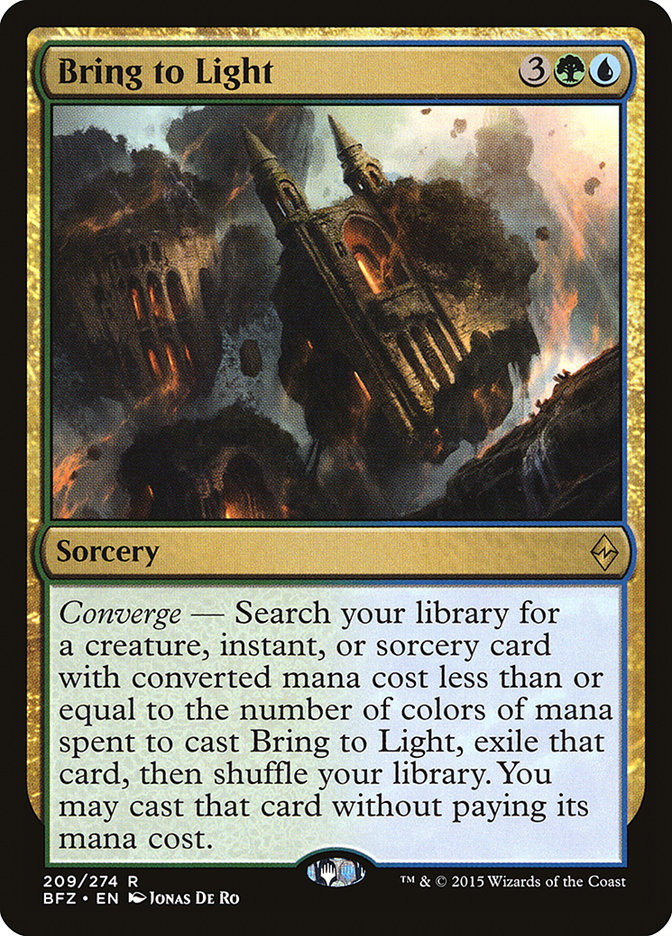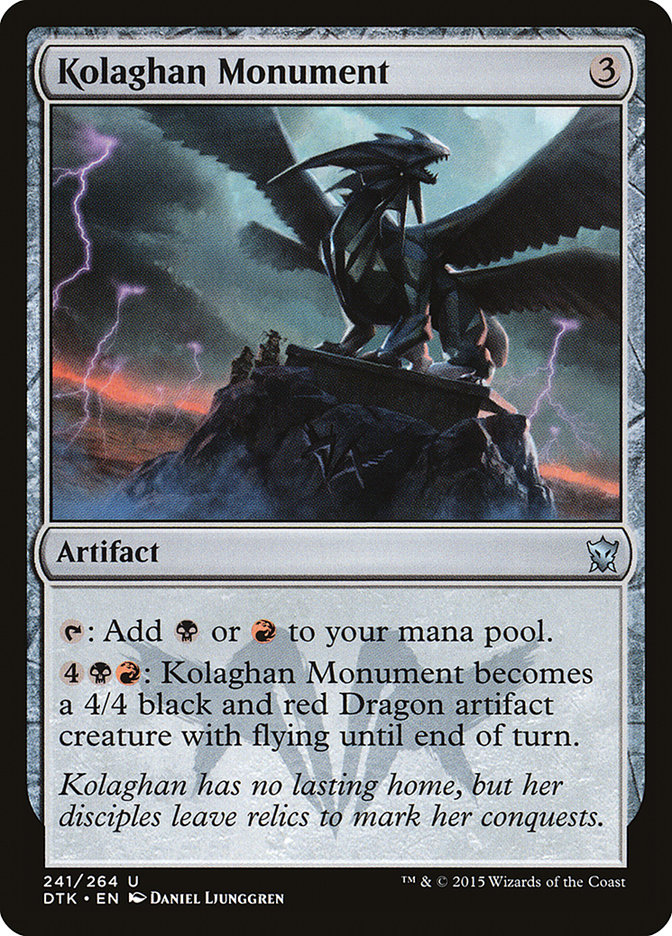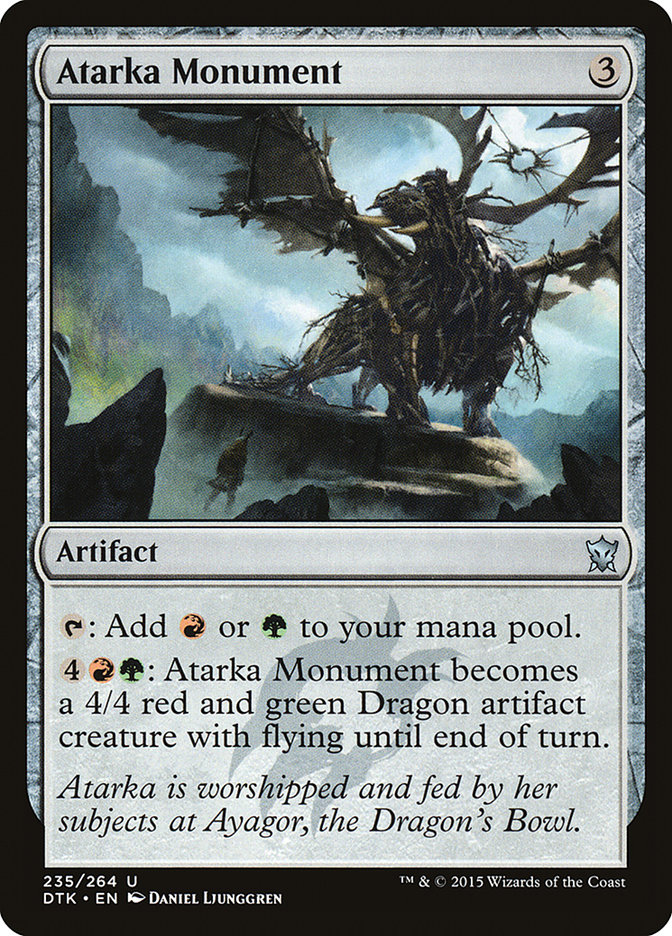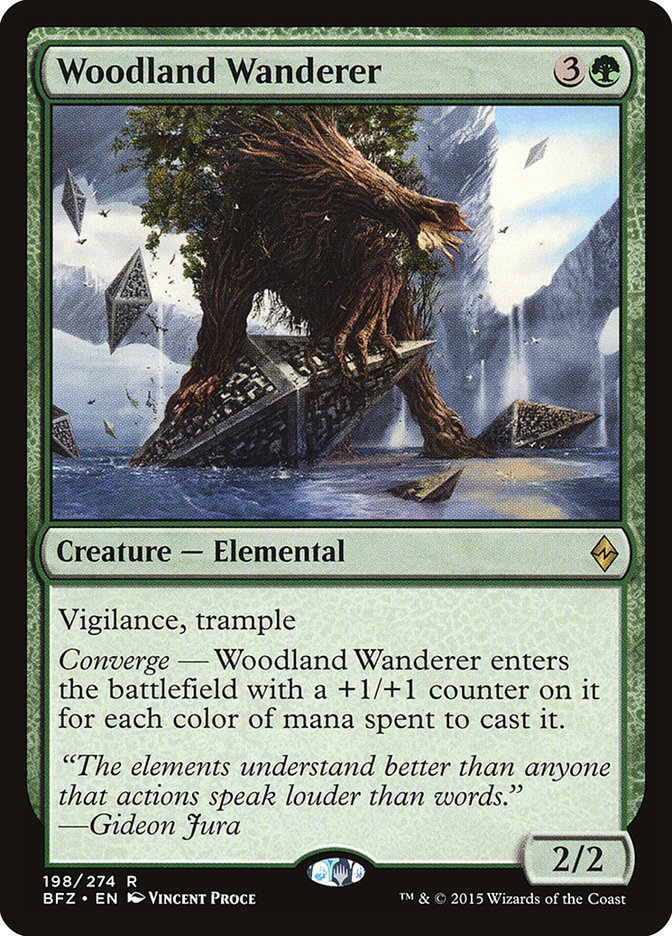The mana in this format may be literally broken.
Not “really good,” but actually broken, as in the game engine breaks down when mana is too free.
It’s definitely possible that deeper exploration of the format may reveal that as easy as adding colors is, tempo may be more important, or perhaps getting
more business out of your lands by using lands with abilities.
Maybe.
You can say a lot of things about Battle for Zendikar, but there’s definitely no denying that it’s going to throw the old format completely out
the window. There are now more good lands that generate effects than we could ever hope to play, and the interaction between fetchlands and Battle lands
means we can play as many colors as we want.
Don’t get me wrong, there is still reason to play less colors. For instance, if you play a shard (like Naya) you get to have more of your lands enter the
battlefield untapped (basically all of them). If you play one or two colors, you get to use a bunch of lands that generate spell-like effects. Still, if
you want to use the powerful three-color cards from Khans of Tarkir, you can put combinations of them together never seen before.
All in the same deck?
Wooo! No rules!!
You can basically just play whatever you want. For instance, here’s a five-color Collected Company deck that just plays whatever the hell creatures it
wants to.
Creatures (27)
- 4 Rattleclaw Mystic
- 2 Anafenza, the Foremost
- 4 Mantis Rider
- 4 Savage Knuckleblade
- 4 Siege Rhino
- 1 Den Protector
- 4 Deathmist Raptor
- 4 Jace, Vryn's Prodigy
Lands (25)
Spells (8)
Sideboard

How are we actually able to cast these spells reliably? Well, if you just fetch up basics on turns 1 and 2, you can then fetch whatever Battle lands you
want on turn 3 and 4. You do have to plan out your turns to make sure you are going to have the right lands for whichever three-mana spell you’re planning
on playing, but that shouldn’t be too hard.
If you have a three in your hand, you naturally just build towards that. However, if you don’t, you can always play a Battle land on turn 1, and plan on
fetching a basic on turn 3. That will still let you play an untapped land on turn 4. No matter what dual you play on turn 1, you can still play whichever
three-drop you draw, assuming you have the right fetchlands to follow it up with.
It is important to remember that we’re going to be looking to play Rattleclaw Mystic or Jace, Vryn’s Prodigy on turn 2, so we should develop our mana
accordingly. Learning the right order to play and fetch up lands is going to take some practice, even if you’ve played Domain Zoo in Modern. The Battle
lands change the sequencing.
While the surface level use of Battle lands suggests fetching basics on one and two, decks that use lots of different three-color cards may want to hold
off on committing to basics, instead leading with a dual. For instance, imagine your opening hand is the following:

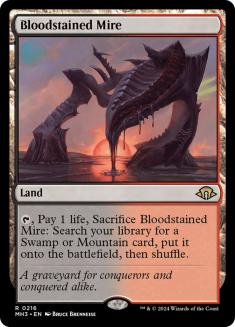
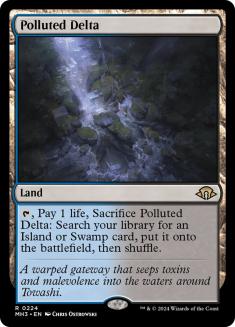

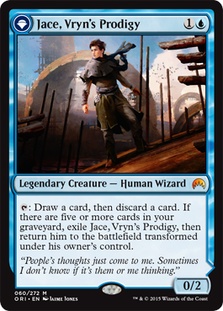
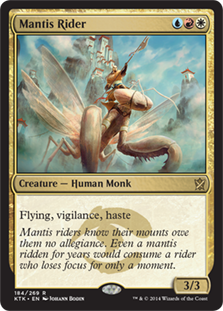
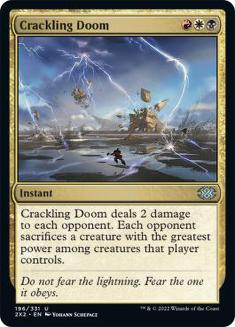
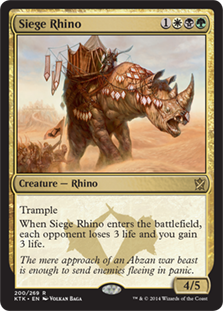

How should you play your lands to give yourself the most and best options?
Well, let’s look at what we’re trying to accomplish:
– Play Jace on turn 2
– Play Mantis Rider or Crackling Doom on turn 3, depending on what our opponent does
– Play Siege Rhino on turn 4 if we draw a land by then
– Preserve the greatest ability to play whatever cards we might draw
Turn 1: Polluted Delta fetch up Sunken Hollow
Turn 2: Plains cast Jace, Vryn’s Prodigy
Turn 3: Now we can use Bloodstained Mire to find Mountain to cast Mantis Rider or Crackling Doom.
If we drew a fetchland that can find green or a Forest, we’re all set on the Rhino. If we drew Polluted Delta or Mountain, we just save the Bloodstained
Mire until turn 4.
When building five-color manabases, the basic starting point is:
Battle Mana Template
1 Plains
1 Island
1 Swamp
1 Mountain
1 Forest
This is not to suggest 25 is the right number, just that these 25 provide a good template to start with. They give you fifteen of each color, and basically
every turn of the game beyond the first, you can have whatever color you want untapped.
Fifteen sources of each can work for decks that don’t use double symbol cards (like Gideon, Ally of Zendikar or Exquisite Firecraft); however, it is a
little shy of what we’d like. Fortunately, a 26th or even 27th land can go a long way. Additionally, we don’t need to support all of our colors equally. We
can even replace a couple fetchlands with Evolving Wilds if we don’t mind slightly more tapped lands.
This path should generally be avoided in decks with double clashing three-drops (like Savage Knuckleblade and Anafenza, the Foremost) unless your two-drops
can be cast off of the shared color (in this case green) since there is no basic you can find on turn 1 that will do what you need.
When tinkering with the template, it’s important to remember that the fetchlands are basically four-color lands, assuming you have the right Battle lands.
The only color they don’t find is the double enemy:
Flooded Strand – Doesn’t find red
Polluted Delta – Doesn’t find green
Bloodstained Mire – Doesn’t find white
Wooded Foothills – Doesn’t find blue
Windswept Heath – Doesn’t find black
This means adding a color is more about what you cut than what you add. For instance, if we wanted to skew the template to have slightly more blue mana, we
can replace a Wooded Foothills with any of the other fetchlands (not just Flooded Strand and Polluted Delta). Whichever fetchland we add determines what
color we’re shaving to make room for the extra blue mana. So if we replace the Wooded Foothills with a Windswept Heath, we’ll end up with 16 blue and 14
black.
Interestingly, despite this format being the most generous-mana format ever, it’s the hardest format to optimize a manabase for I have ever seen. So far,
since the spoiling of the Battle lands, I have actually not seen a single manabase anyone has built for any deck, any color combination, that I
agreed with, aside from a couple decks that might have been correct to use The Template.
Even there, I’d say it’s more likely that the deck either should have used a variation of The Template, or should have been tweaked so that a
variation would be appropriate. The Template is at least solid, basically no matter what the deck is, however, it is very unlikely to be right
since it’s a little shy of everything for how godly the mana in this format is. It’s also not optimized for curving out your specific spells, but rather is
just the average of everything.
While it’s easy to get a playable manabase (just copy/paste the same one for every deck if you want), it’s extremely difficult to maximize since we have
functionally countless possible combinations. For reference, there are about 40 digits worth of “sensible” chess games possible. In Battle for Zendikar Standard, there are
over 40 digits worth of different manabases possible for 25 land decks alone, to say nothing of the possibility of playing fewer or more lands!
There are tons of little insights to be gained into the format by studying the mana that is possible. For instance, when working with The Template, it’s easy to add a bunch of one color if you want to support double cost cards in that color.
Want Dig Through Time and Scatter to the Winds? You can cut all three Wooded Foothills for a Polluted Delta, a Flooded Strand, and a Windswept Heath. Make
the 26th land an Island and you’re rocking. That’s nineteen sources of blue, including ten that are untapped on turn 2. That’s even enough to support
Silumgar’s Scorn!
Creatures (12)
- 1 Silumgar, the Drifting Death
- 1 Dragonlord Silumgar
- 2 Dragonlord Atarka
- 1 Dragonlord Dromoka
- 3 Dragonlord Ojutai
- 4 Jace, Vryn's Prodigy
Lands (27)
Spells (21)

This list goes a step further and replaces the Windswept Heaths with Lumbering Falls and Sunken Hollows. Creature-lands are really valuable in a strategy
like this, particularly since the hexproof is such a great fit alongside Dragonlord Ojutai and Silumgar, the Drifting Death. Also, remember that each
Windswept Heath you cut for a Sunken Hollow increases the black mana in the deck. As a result, we’re actually able to support double black cards like
Ruinous Path, Languish, and Crux of Fate.
Sacrificing the Windswept Heaths does leave us a little short of the other colors, however, replacing Plains, Mountain, Forest, and Cinder Glade with Haven
of the Spirit Dragon helps smooth out the mana for our three splashes since all of our non-U/B spells are Dragons. It’s important to note that cutting
Cinder Glade means Bloodstained Mire can’t find green mana, anymore; however, we don’t need green until late and we’ve got lots of other sources.
This configuration does have a little more access to white than red or green (ten sources, not counting Haven), so if we wanted, we could totally get away
with a white card or two, particularly out of the sideboard (like Utter End or Ojutai’s Command).
Want Knight of the White Orchid and Gideon, Ally of Zendikar?
Knight of the White Orchid is a powerful creature to begin with, but unlike Nissa, Vastwood Seer, it does work with Canopy Vista (and Prairie
Stream), making it a “fixer.” It’s even going to get the land untapped if we fetched up basic Plains! It’s particularly sweet to use Knight of the White
Orchid to find Prairie Stream on turn 3, then drop another untapped land and hold up Disdainful Stroke or Negate. Even if we can only trigger our Knights a
third of the time, we can still count a playset of Knights as being at least a green source and a blue source.
Creatures (23)
- 4 Knight of the White Orchid
- 3 Wingmate Roc
- 4 Mantis Rider
- 4 Siege Rhino
- 4 Jace, Vryn's Prodigy
- 4 Hangarback Walker
Planeswalkers (3)
Lands (26)
Spells (8)

It can be tricky to balance the use of tri-lands in a Battle land manabase. This list can only afford white tapped lands since it needs to be sure to play
Knight of the White Orchid with two mana. It would prefer to play Mystic Monastery instead of Nomad Outpost, so as to ensure Jace on turn 2; however, there
is no B/W land to fetch up the way we can find the extra Prairie Stream (and I thought it would be safer to have more one land to search up, so as to not
run out).
Playing a tri-land on turn 1 means we need to search up or play basics on turn 2 and 3 if we want our Battle lands to enter the battlefield untapped.
That’s not super hard or anything, but it does mean we really need to be disciplined about looking ahead to figure out what order to play our land in.
Polluted Delta and Wooded Foothills may be “white sources,” but it’s important to remember that they can’t find untapped white for turn 2 unless you use
them on turn 1 as a virtual tapped land.
Painful Truths has some appeal, but if we’re blue, Treasure Cruise is a fair bit better. It’s not just saving three life (although that is big when we’re
already paying life for all this fetching). Treasure Cruise is often going to cost three or less since playing a ton of fetchlands really brings the cost
down fast.
How greedy can we get?
I’m really not sure at all. Let’s try pushing the limits a little:
Creatures (10)
Planeswalkers (1)
Lands (26)
Spells (23)

This list has a pretty ridiculous assortment of casting costs, without so much as a single tri-land, but I’m not sure that’s a problem. Evolving Wilds may
not be able to change color from turn to turn, but it does help ensure that our Battle lands are always untapped on turns 3 and 4. If anything, the biggest
problem with the mana in this deck is likely the glut of fives in order to support Bring to Light (since finding fives gives us the most “bang for our
buck.”)
Bring to Light is kind of a crazy tutor, really. Like a lot of tutors, it costs five, however, getting to play the spell for zero makes it effectively cost
zero in a lot of positions. You have to play the spell immediately, but if you build with this in mind, that’s not much of a problem.
It can be easy to underestimate just how amazing Bring to Light is once you build around it. Think about how crazy a Planar Outburst/Dragonlord Ojutai
split card would be. What about an Ugin’s Insight/Disciple of the Ring split card?
Now imagine a split card that could do all four!
That’s not even the full story, either. Problematic permanent? Go get Utter End. Need another sweeper after casting your Planar Outburst? Go get Languish.
Need some extra life? Go find Siege Rhino or Ojutai’s Command. Just remember not to search up Radiant Flames (or any other converge card), since the number
of colors you are considered to have spent is zero.
These are speculative, but they do ramp us to five a turn early. I went with the red ones to take advantage of the tempo boost we get when we cast Wild
Slash on turn 3 after casting a Monument.
Not every five-color deck needs to be so themed. We could just play whatever we think the best cards are of each cost. For instance:
Creatures (20)
- 4 Mantis Rider
- 4 Siege Rhino
- 2 Dragonlord Ojutai
- 4 Jace, Vryn's Prodigy
- 4 Hangarback Walker
- 2 Woodland Wanderer
Lands (27)
Spells (13)

I don’t love the prospect of playing Lumbering Falls with Crackling Doom, but maybe we can get away with one. Generally, though, this is a pretty
respectable attempt at just brute-forcing people with card quality.
I’m not sure how to feel about this guy. Don’t get me wrong, a 6/6 vigilance, trample for four is a good rate. It’s also a pretty conveniently positioned
set of stats, living through Roast and trampling over Hangarback Walker. The thing is… What if 2/3rds of the field plays Crackling Doom and/or Abzan Charm?
There are some really strange metagame considerations to make when everyone has access to such unbelievable mana. Are we supposed to play Self-Inflicted
Wound maindeck? I mean, just look at these lists…
To get some contrast, let’s take a look at what kind of aggro decks one might be able to build on the back of fetching Battle lands:
Creatures (23)
- 4 Siege Rhino
- 4 Warden of the First Tree
- 4 Abbot of Keral Keep
- 4 Scythe Leopard
- 3 Makindi Sliderunner
- 4 Snapping Gnarlid
Lands (25)
Spells (12)

This list is only four colors instead of all five to help make room for more basic Forests to better support early Scythe Leopards and Warden of the First
Trees alongside creature-lands. If you wanted, you could slash blue with sources by:
Out:
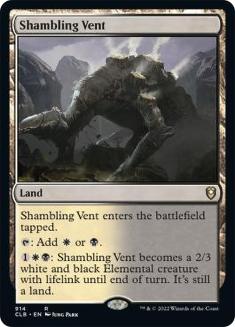


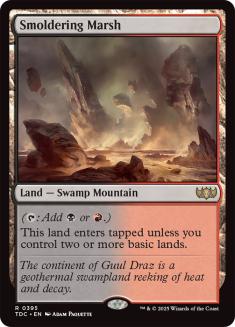

In:


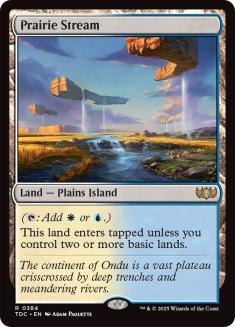
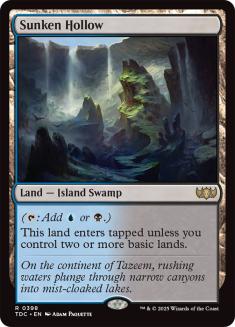

This leaves us down a black, but up a red. Alternatively, we could add a Flooded Strand instead of the second Polluted Delta in order to be up green
instead. If it we decided we needed that black back, we could go down to two Forests.
Notice how we don’t actually need a basic of every color. It can be risky to play very many fetchlands that can’t find at least two basics, but in
moderation that can be less risky than drawing a basic that doesn’t cast any other three-color cards.
As you see, Battle for Zendikar is going to completely redefine the format. A bunch of the cards will be familiar, but the possibilities go far,
far beyond any of the combinations we’ve ever seen. What are the best cards at every spot on the curve?
Part of what makes new formats exciting is the prospect of trying to actually break them.
And sometimes they can be broken.
The chances of breaking this one are a lot greater than usual…

